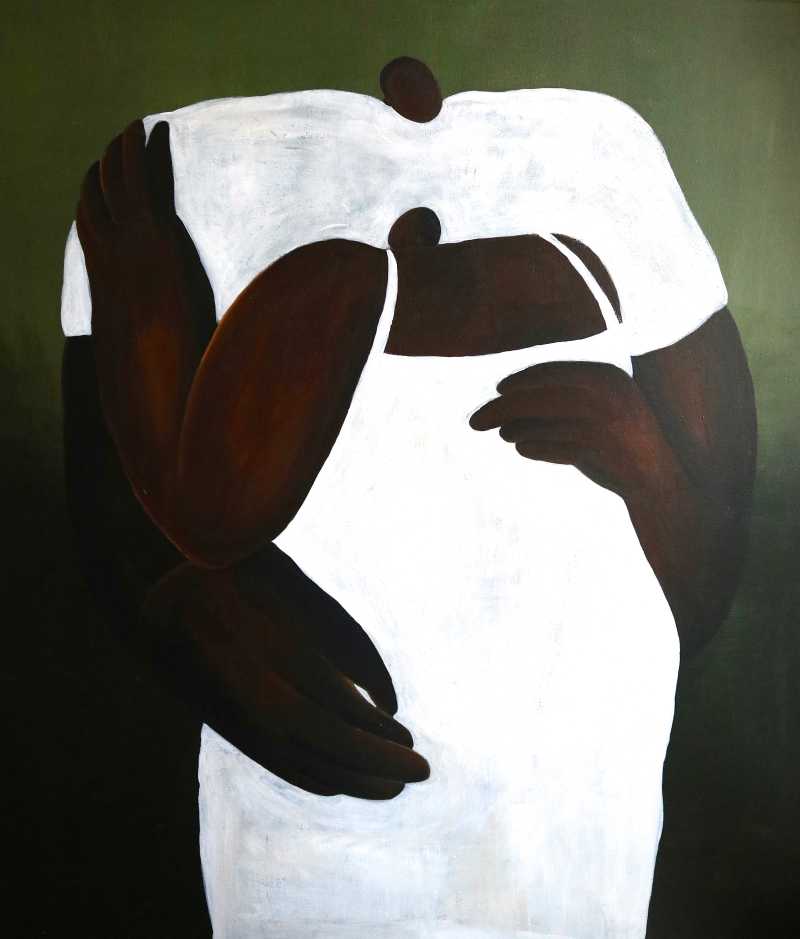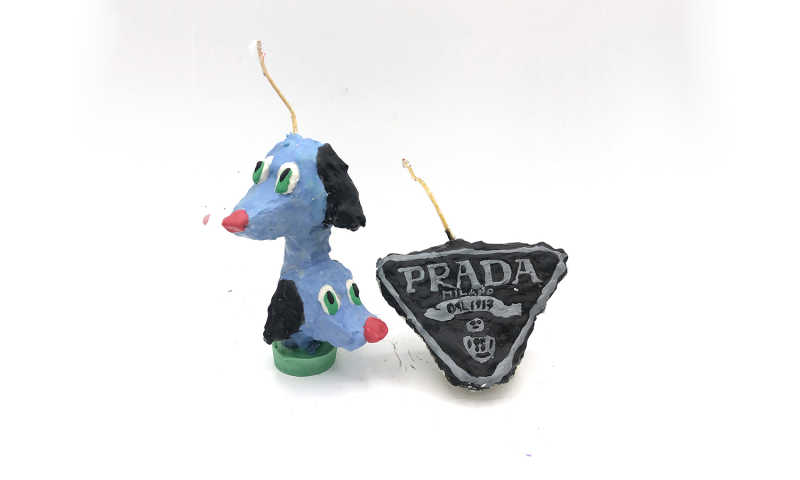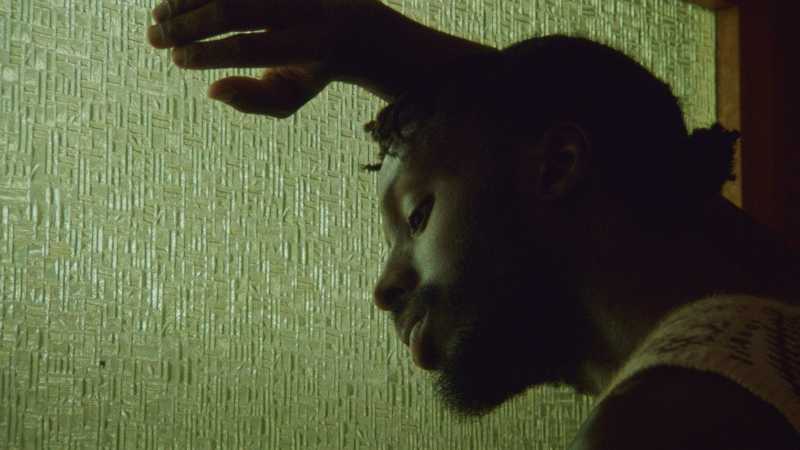Q: What draws you to collage?
Emma: There are no rules. The messier, the better. I love seeing the juxtaposition between two or five or fifteen images. I can either be laying on the bedroom floor, with a mess of magazines, tape, paint, and stickers around me, or in front of my computer going through thousands of images I’ve scanned - copy and pasting a handful that seem to emote a shared mood. I like that adding or subtracting one photo can alter the entire tone of the finished product. To me, it’s as much of a challenge as it is relaxing.
Q: Your Instagram bio is, “the dream days of yesterday against the backdrop of today — past, present & future.” What influenced this concept?
Emma: Ever since I was a kid, I’d marvel at the photos my mom took during the seventies. If I weren’t her daughter, I’d still be her biggest fan. She took photography classes, playing around with light and landscape, but my favorites are of her sisters, my grandparents, vacations they went on, pets, and her boyfriend. It’s this entire world that’s so foreign to me, as if she could be a stranger - the magical backdrops of tropical vacations, these pets that she loved so dearly, that I never knew, places and people who existed in such a way that compelled her to capture them, places and people I’d never travel to or meet. Her own personal universe was captured in a very precious way, and it kind of pained me that no one beyond our family would ever see it.
Nowadays with Instagram and Tumblr and whatnot, everyone has some kind of platform to share their photos, but back then, photos were taken just to make memories - with really no intention of others viewing them, unless you shared them with a friend. In that sense, these photos are really personal. I had grown up taking photos with my friends and siblings around our farm, dressing up in wigs and outfits we collected from Value Village. Sometimes I’d put them in my zine, sometimes I’d shoot them just to have them to hang onto. There’s a big joy in dropping off film to get developed, waiting for them, imaging how they’ll turn out, then finally getting the film back and being excited or even disappointed at the way a shot turned out. I have hundreds of photos from my teen years until now, my mid twenties. So the “dream days” are referring to my mother and aunt’s girlhood in the 70’s, which I collage or share against the backdrop or beside a photo that’s more current, from my adolescence or from yesterday.
Q: Where do you get these older photos from?
Emma: All the older photos were taken by my Mom or my aunts - there are piles of photo albums in my grandparents’ basement that I have poured over, stared at, and scanned onto my computer. I once asked my aunt if she had any more photos at her house and she said - “No - your mom was always the one with the camera!” I wish she had taken thousands more.
Q: Your collages have a very dreamlike quality to them — I think it’s a combo of the colors as well as the photos. For me at least, it creates a bit of nostalgia for a past time that I might not have even been present for or even a romanticization of the past. Is this something you want to express in your art?
Emma: You nailed it with that description. I think a big part of me has always been nostalgic for the years I wasn’t alive in - mainly the 1970’s. I was born in the early 90’s, but I’m still nostalgic to relive those hazy years of early childhood - I wish I had been fifteen in 1993, so I could’ve fully experienced the music and culture, life before the internet. Tipping my hat to these decades in the collages and photos is kind of like throwing a lifeline back to those times. That’s the reason why I use the images my mom took in the 70’s alongside my recent photos or the ones I took in the 2000’s - or why I reference pop culture icons from those years - it’s her girlhood alongside mine, those delicate years of navigating who you are, exploring it through a lens or a pen on paper. But I guess regardless of what year you came of age in, those methods of documenting yourself and what you go through is timeless.
Q: What draws you to using your mom as a character in your art, and how do you feel that it expands the story your art tells?
Emma: She’s my muse because when I look at these photos, she appears as such a question mark to me. I only know her as my mother. A few years ago I was in the laundry room with her as she was throwing the wet clothes into the dryer, and I caught her face as she was moving. For the first time in my life, I really saw her eyes, their unnameable colour, and thought - Wow - I’m seeing her as she was when she was seventeen.
She isn’t just my mother, she’s a woman, but she was once a girl with a whole life behind her and I’ll never know the full story, regardless of how many times I ask her to tell me stories or look at pictures. There’s a weird magic in realizing that. It was like time rolled back, and I was just looking at a young girl doing laundry. When you’re twenty five, you feel like you’ve already been through it all and lived a life. I guess these photos are my way of getting to know the girl she was - laughing on the deck of a cottage somewhere in Southern Ontario, dressing up the family dog, posing with her grandmother with a glass of wine in her underage fist… I’ll never tire of getting to know her through the photos she took.
“It’s my mom’s girlhood alongside mine—those delicate years of navigating who you are, exploring it through a lens or a pen on paper.”
Q: You categorize your collages as a sort of diary. Do you see them as a personal diary or something more universal in a sense, something other people can see themselves in as well?
Emma: I feel like lately it’s been weaving more into personal territory, but I have tried to keep it so it feels like the audience is peering into a girl’s diary - just some mysterious girl. Do you remember being in science class or math or English class, flipping open the textbook you were assigned at the beginning of the year, and seeing the names of whoever had the book before you scrawled on the front page? Someone who wasn’t in the school anymore, someone who had long since graduated and moved on to do whatever with their lives… Maybe there were some doodles throughout the book, some coded messages hidden throughout the pages, written on the spine… That’s how I want this diary to feel. Like some mysterious person bundled up some photos and poems, passed them on to you, then just disappeared.
Q: What inspires your style and has it changed over time?
Emma: I feel most inspired when I listen to a beautiful song or read a poem I love, but it also depends on my mood because if I feel lazy or am having a down day, nothing will happen. Miriam Waddington is a Canadian poet I have adored since high school - the words she dreamed up influence a lot of what I do. KM Graham was a Canadian artist, and again, the colors and imagery in her paintings are what I hope to reflect in whatever pictures I put together. I think my style has grown up a lot over the years. I used to make a zine called Come on Killer and it was very grungey, black and white, pretty rough looking. Now I like to embrace lightness, I try to focus on what’s soft, things that give me hope, and even in harsher times I try to focus on what’s delicate or what can give life and seem positive.
Q: How does art create a space for growth?
Emma: I think as long as you can watch a movie, read a book, smell a flower, listen to a song, and if it touches something within you and changes you, there will always be growth. It goes both ways. There is the person holding the pen and writing the words, then there is the person who is reading the words on the page. There is the person singing the song, then the person who is hearing the song. Does it change the writer or the reader more? I’d say it’s pretty equal, that’s what’s so special about it.






